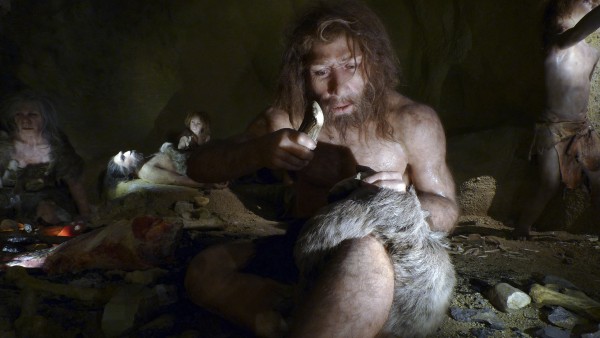55,000 Year Old Skull Links to First Neanderthal and Modern Human Sexual Encounter
| Ana Verayo | | Jan 29, 2015 05:38 AM EST |
(Photo : Reuters) Modern humans now have weaker bones compared to hunter gatherer ancestors.
Ancient skull fragments recently unearthed by scientists in Israel's West Galilee suggests Neanderthals and modern humans co-existed and mated some 55,000 years ago, or 10,000 years earlier than previously thought.
Modern Europeans have about four percent of their genes derived from Neanderthal ancestors. This shows the two human species interbred. Scientists, however, have yet to pinpoint when it happened during human evolution.
Like Us on Facebook
Now, this particular skull is the earliest evidence modern humans co-existed and lived with Neanderthals in a particular area.
According to paleontologist Bruce Latimer, scientists have always believed modern man and Neanderthals lived in the same place at the same time but there has been no physical evidence supporting this theory until the emergence of this new skull fossil.
The skull was found inside a cave in northern Israel. It was covered in mineral deposits and scientists used dating techniques that determined the skull was age 50,000 to 60,000 years old.
The skull is believed to have held a relatively small brain that resembles a modern human's skull since the occipital bun is present at the back of the skull. Neanderthals' buns appear as a groove in the middle of the skull. This is missing in modern human skulls.
Researchers still don't know the gender of the fossil since the brow ridge is missing. They also think this particular skull doesn't belong to the other sub-adult human teeth and bones found inside the cave.
According to Mark Hans chairman of the Cape Western Reserve University's Department of Orthodontics, it's likely there are more fossils inside the cave that could link to the skull.
Manot Cave is located in a region where Neanderthals settled for a period during the time when ice sheets forced them to relocate to warmer regions. It's also connected to the only land route available for prehistoric humans that traveled from Africa into Europe, the Middle East and Asia.
Neanderthals and modern humans probably encountered each other while they were hunting and foraging for food.
This study was published in the journal, Nature.
Tagsneanderthals, Human evolution, ancient humans, prehistoric humans, 55, 000 Year Old Skull Links to First Neanderthal and Modern Human Sexual Encounter, Israel, skull israel cave neandethals modern humans sex interbreeding co-habitation co-exist
©2015 Chinatopix All rights reserved. Do not reproduce without permission
EDITOR'S PICKS
-

Did the Trump administration just announce plans for a trade war with ‘hostile’ China and Russia?
-

US Senate passes Taiwan travel bill slammed by China
-

As Yan Sihong’s family grieves, here are other Chinese students who went missing abroad. Some have never been found
-

Beijing blasts Western critics who ‘smear China’ with the term sharp power
-

China Envoy Seeks to Defuse Tensions With U.S. as a Trade War Brews
-

Singapore's Deputy PM Provides Bitcoin Vote of Confidence Amid China's Blanket Bans
-

China warns investors over risks in overseas virtual currency trading
-

Chinese government most trustworthy: survey
-

Kashima Antlers On Course For Back-To-Back Titles
MOST POPULAR
LATEST NEWS
Zhou Yongkang: China's Former Security Chief Sentenced to Life in Prison

China's former Chief of the Ministry of Public Security, Zhou Yongkang, has been given a life sentence after he was found guilty of abusing his office, bribery and deliberately ... Full Article
TRENDING STORY

China Pork Prices Expected to Stabilize As The Supplies Recover

Elephone P9000 Smartphone is now on Sale on Amazon India

There's a Big Chance Cliffhangers Won't Still Be Resolved When Grey's Anatomy Season 13 Returns

Supreme Court Ruled on Samsung vs Apple Dispute for Patent Infringement

Microsoft Surface Pro 5 Rumors and Release Date: What is the Latest?










